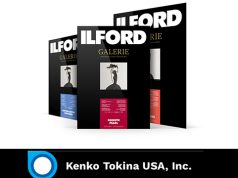
In my previous Retail Intelligence column, “Profit from Education: How to Build a Successful In-Store Education Program,” I discussed the steps needed to design a classroom space and how to go about filling the instructor role in a successful education program. In Profit from Education II, I address the steps, tricks and also techniques a photo retailer should take to build an effective and winning education curriculum.
I remind you that today, the store/sales/customer relationship is not very strong, since goods are available everywhere and the sales process doesn’t provide an experience or build trust.
However, when you educate a customer, you become their mentor and they develop a greater level of trust and attachment to you. And teaching them about the techniques and beauty of photography creates an experience. Ultimately, that experience is the most powerful weapon you have to lure your customers away from Amazon and B&H and into your store.
Profit from Education II: The Curriculum
An effective curriculum is diverse in its offering from both the level of photography (beginner, intermediate, advanced/professional) and in the way those levels are presented. Not everyone learns in the same way, and not every class is going to appeal to a wide variety of customers.
Additionally, make sure to label your classes clearly for the level they are intended. You don’t want advanced photographers showing up for a class thinking it will be at their level only to discover you are teaching basics. And you don’t want beginners showing up for a portrait class thinking they’ll get better family photos when the class is about using strobes.
Beginner Classes
This is a chance to get people into your store again after their first purchase and also to create an experience that will bring photography permanently into their lives. I know many people who took beginner classes and who are today professionals. For many, this is the first photography lesson they have ever taken. If you do well here, they will tell others. Therefore, make sure your best instructors teach beginner classes.
1. Have a staple course available on a monthly basis. Start with the basic “Understanding Your Camera” and have several sequels. The first class should deal with ISO, aperture, shutter priority, etc. The second could teach exposure and metering, and the third could discuss composition and white balance. You will have the most students in the first class, so make sure to hold many of these each month. Finally, offer this class as a series of 3–5 classes of two hours each, or offer it as a full-day workshop for those who can’t get there that often and want to get it done in one shot.
2. Provide one-on-one instruction at the beginner level. Some people don’t learn well in the classroom setting or are wary. This is a chance to really bond with a customer and show the advantages of being local. A customer who gets to know an instructor in a one-on-one is not likely going to buy his or her equipment someplace else.  3. Have guest lecturers on many topics. A famous veteran Canon Explorer is good for some. A photojournalist showing a life’s work is good for another; a Nat Geo photographer for a different crowd. I held a seminar with an NFL player who was known for taking selfies. I got 80 people into that seminar. Be original; it will get people in and talking.
3. Have guest lecturers on many topics. A famous veteran Canon Explorer is good for some. A photojournalist showing a life’s work is good for another; a Nat Geo photographer for a different crowd. I held a seminar with an NFL player who was known for taking selfies. I got 80 people into that seminar. Be original; it will get people in and talking.
4. Take field trips to a variety of locations: train stations, football, baseball and other sports events, castles, botanical gardens, zoos, famous buildings, abandoned prisons, wolf preserves, sunrises, sunsets, lakes or whatever works in your area. Of course, arrange in advance admission and permission with the locations and never charge more for the admission than the location itself.
5. Reach out to vendors for their artists. They will have a lot of beginner offerings and will help you with advertising and instructors.
6. Give bridge classes that clearly state you are trying to advance participants to the intermediate level. A great choice is “Understanding Your Flash” or “Using One Light in Portraits.”
Intermediate Classes
Here is an opportunity to create store advocates. If you can turn beginners into intermediate photographers, and also attract those who are already enthusiasts, you can build an army of loyalists for your store. They will visit often, buy and also go out into the world and tell people to shop at your store and no place else.
These are the people who walk new customers into your store. Furthermore, these customers will respond to your surveys, so have them frequently and ask what they like, dislike and want to have you offer.
1. Offer standard intermediate classes like HDR photography, infrared, basic lighting, basic portraiture, product photography, how to sell your images, photo editing, night photography, basic wedding as well as event photography, etc.
2. There should be many class offerings from outside instructors with specialties. You want your students to have fresh perspectives. You can hold a class with your in-house instructor, but you can also bring in six different instructors on the same topics over a year’s time and your students will take every class.
3. Make sure that all intermediate classes are workshops. At this level sitting passively in front of a lecturer is old hat. Essentially every intermediate class should involve shooting by the participants. Furthermore, lighting equipment and props should be available for the students to use. Models are a must.
4. Field trips are great, but make sure they provide something your students can’t get on their own. Bring lighting, models and equipment and show them how to use it on location. A model shoot at sunset or in a fancy house is something that appeals to this level of photographer.
5. Topics on videography are a draw but on a limited basis.
6. Portfolio critiques are enormously popular with this group. Bringing in a well-known photographer as a guest reviewer really gets them excited.
Advanced/Professional Classes
This is absolutely the hardest group to please. Many of them don’t think they need instruction because they are already making money or have already taken classes. All of them are aware of the NYC camera stores and Amazon and will, for the most part, buy where it suits them. Building loyalty with them is possible but it’s harder work.
While there is not a large volume of customers who will take very advanced courses, you want to have some in your curriculum. It establishes you as authority on photography (with the beginner and intermediate photographers). It really is cool for beginners to see top photographers in your store shopping next to them. And it does remind those pros that you are a good local source for them to shop at.
Courses for pros should be determined by the photographers themselves. It’s best to survey them and ask them what they want, less you have an unattended workshop. Furthermore, the most successful classes on a consistent basis involve the words “Making Money at…” in the title. For example, wedding photographers will show up to your class if it’s about how to make more money doing it.
So there are the techniques needed to design a powerful curriculum for your education program that will drive customers into your store regularly.
In future articles, I’ll discuss how to effectively market your education program and also how to operate that program on a day-to-day basis—and turn it into a profit center that’ll help your store become a bigger success.
Have you started building your education program yet? If you need advice, please feel free to reach out to me. I am happy to help. I want to see all of you survive and thrive.





